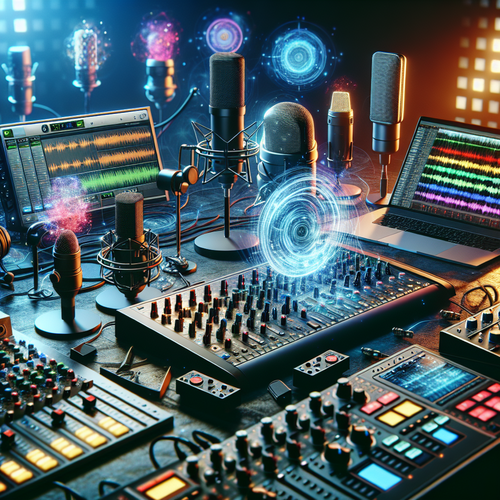
Top 5 Free Tools for Audio Recording
Top 5 Free Tools for Audio Recording
Audio recording has become an essential part of many creative endeavors, from music production to podcasting. Whether you’re a beginner or a seasoned professional, having the right tools can make a significant difference in your recordings. In this guide, we’ll explore the top 5 free audio recording tools available and how you can use them to enhance your audio projects.
Prerequisites
- A computer (Windows, macOS, or Linux)
- Microphone (USB or XLR)
- Audio interface (if using XLR mic)
- Headphones
- Internet connection (for downloads)
1. Audacity
Audacity is one of the most popular open-source audio recording tools out there. It’s available for Windows, macOS, and Linux, offering a wide range of features suitable for recording, editing, and mixing audio.
Key Features:
- Multi-track recording and editing
- Import/export audio files in various formats
- Support for plugins (like LADSPA, Nyquist, VST)
- Noise reduction and audio effects
How to Use Audacity: Simply download and install Audacity, connect your microphone, select your recording device from the settings, and hit the record button.
2. GarageBand
GarageBand is a free music creation tool available on macOS and iOS. It offers an intuitive interface perfect for music production and audio recording.
Key Features:
- Built-in virtual instruments and audio loops
- Easy-to-use mixing and mastering features
- Support for MIDI recordings
- Multi-track audio editing
How to Use GarageBand: Open GarageBand, select a project, choose your track type, and start recording your audio with a simple click.
3. Ocenaudio
Ocenaudio is a fast and easy-to-use audio editor that works across all platforms. It’s a superb choice for those who prioritize simplicity without sacrificing functionality.
Key Features:
- Real-time effect application
- Easy navigation through large files
- Support for VST plugins
- Spectral analysis tool
How to Use Ocenaudio: Download the application, open it, and import your audio file to start editing right away.
4. Reaper
Reaper offers a free trial that is fully functional, though it is technically a paid software. It is great for recording, editing, mixing, and processing audio.
Key Features:
- Multi-channel audio recording and editing
- Vast stable of plug-ins
- Customizable interface
- Efficient performance on less powerful hardware
How to Use Reaper: After installation, create new tracks, configure your audio inputs, and start recording with ease.
5. Adobe Audition (Trial)
Adobe Audition provides a 7-day free trial and is a professional audio workstation used by professionals to record, mix, and edit audio. This is ideal for those who want a taste of a comprehensive audio solution.
Key Features:
- Multi-track audio mixing
- Robust audio restoration capabilities
- Integrated media and video editing
- Extensive effects library
How to Use Adobe Audition: Download the trial, install it, and start a new session to begin your recordings.
Troubleshooting Common Issues
- Check microphone settings within the software if it doesn’t record.
- Ensure that your audio interface drivers are up to date.
- Try different USB ports on your computer for better connectivity.
Summary Checklist
- Download and install your preferred audio recording tool.
- Connect your microphone and test the audio levels.
- Start recording and explore different features.
- Save your projects regularly and back up your recordings.
For a deeper understanding of audio tools, check out our article on Top 5 AI Tools for Audio Editing.













